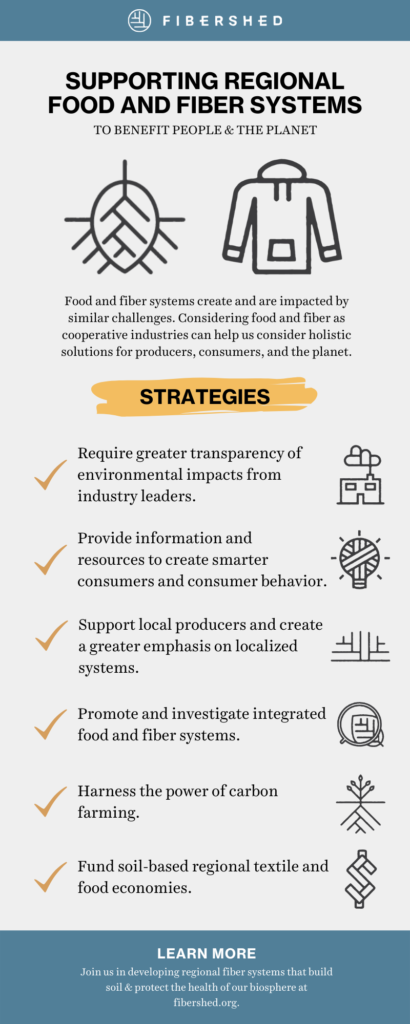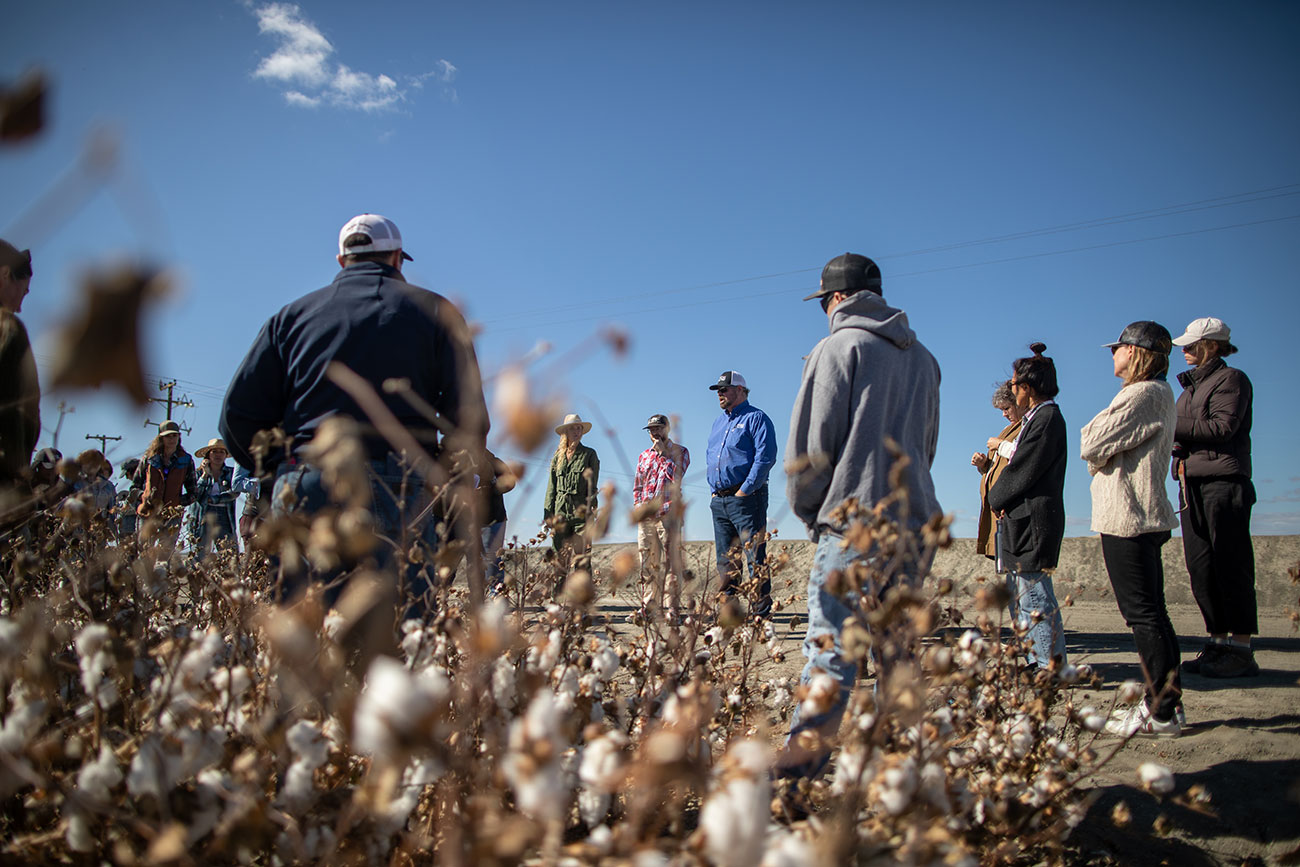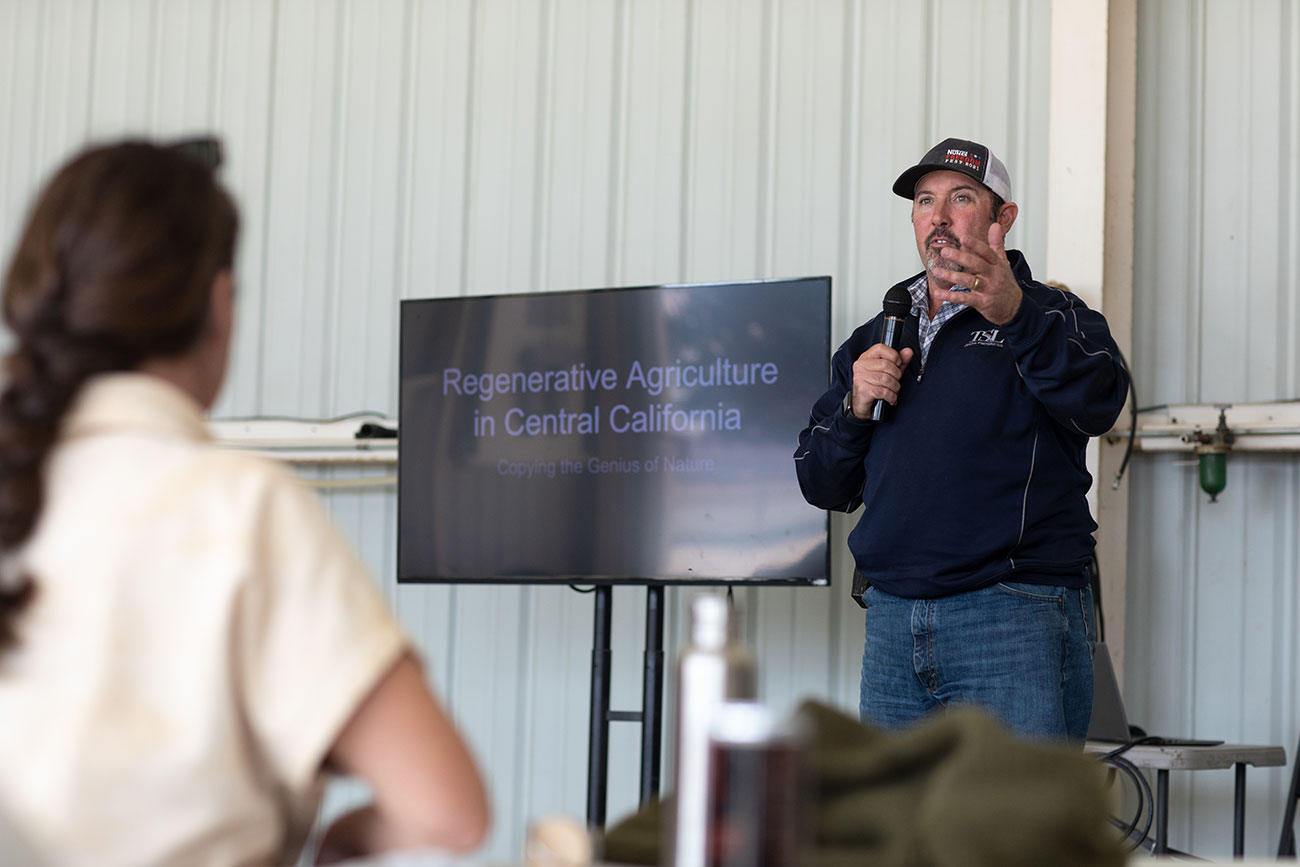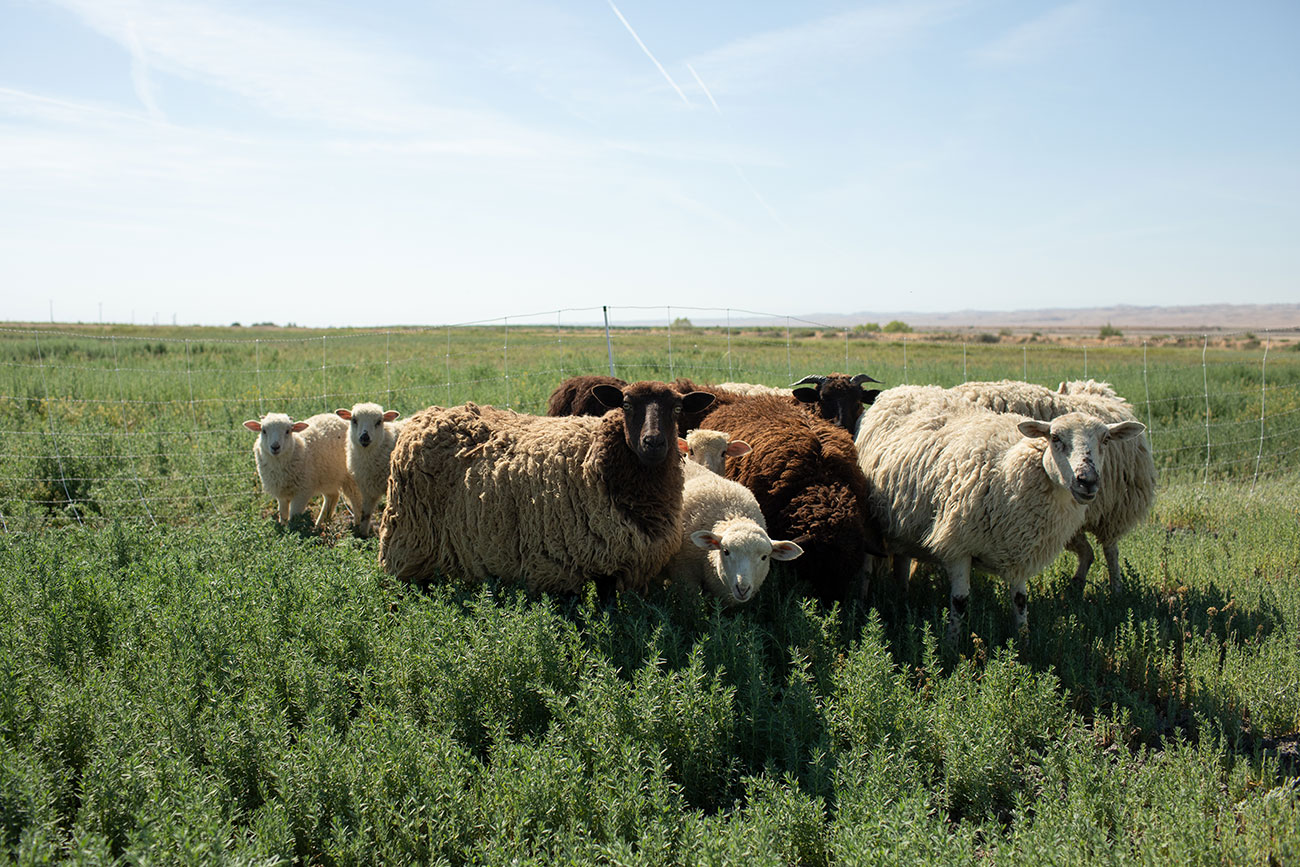
When it comes to climate change and agriculture, a lot of emphasis is placed on sustainable food production. While it is true that what we eat and how we feed ourselves plays a key role in climate change, this oversimplified vision fails to account for the interconnected nature of agricultural systems. The clothes we wear and how they are produced have a significant impact on our vulnerable planet. Most raw materials found in clothing come directly from agriculture — farms, ranches, forests, and landscapes. To truly address the climate crisis, our food, fiber & natural dye systems must be retooled and regionalized to become part of the climate solution and build community prosperity.
Reducing the Carbon Footprint of Food and Fiber Systems
As Fibershed Founder and Executive Director, Rebecca Burgess, and Sarah Kelly, Project Director, SAFSF Special Project on Sustainable Fibers and Textiles, wrote for One Earth, “Food crops and fiber crops are part of an interconnected agricultural system with linked impacts on public health, social justice, and the environment. Soil-based fibers feed into a global fiber, textile, and leather industry that is valued at over $1 trillion dollars, projected to grow to $1.6 trillion by 2022. For purposes of comparison, this is roughly twice as large as the global smartphone market. Behind these numbers lies a fundamentally unsustainable and unjust business model. One that is designed to sell more products to more people each year, while chasing the globe for the cheapest possible materials and labor.”

Just like our food system, our fiber system is immensely flawed. In the United States, the consolidation of small and mid-sized regional farms has led to a food system that is dependent on large-scale monoculture, harmful chemical fertilizers and pesticides, and meat produced in confined animal feeding operations (CAFOs). These practices extend to how fiber crops are grown. According to Emily Chan at Vogue, “Growing cotton — which makes up a third of fibres found in our clothes — can lead to soil degradation and habitat loss, as well as damage to species through the use of harmful pesticides. Leather, meanwhile, is a product of livestock farming, an industry that is responsible for 70 percent of deforestation in the Amazon rainforest. Viscose, too, is a significant contributor to deforestation, with an eye-watering 150 million trees logged annually to produce the fibre. …Other materials such as wool and cashmere can lead to land degradation and the disruption of food chains, while synthetic fibres, such as polyester, come from the mining of fossil carbon, again leading to land degradation and loss of habitat (not to mention the greenhouse-gas emissions of the millions of harmful microplastics that are later released into our oceans).” It is undeniable: food and fiber have a big carbon footprint.
A Growing Movement for Sustainable Food and Fiber Systems
As we work to rebuild our unsustainable food system in order to produce positive outcomes for our health, the environment, and local communities, so too should we look to rebuilding fiber & natural dye systems. Food and fiber economies grow together, and the future of our planet depends on healthy, resilient, and equitable agriculture. The good news is that there is a growing movement of producers, farmers, advocates, nonprofit organizations, and policymakers who are working to educate the public about the harmful effects of the current fiber & dye system and to develop climate beneficial practices at every level of the supply chain. To address problems within the fiber supply chain, we need to stop the spread of misinformation, elevate examples of good regional food and fiber systems, and highlight movements that are working holistically to restore our agriculture system.
A recent report from the Transformers Foundation, Cotton: A Case Study in Misinformation, describes the urgent need for the fashion industry to increase transparency in sharing and disseminating its environmental impacts. Using cotton as a case study, the report details how disingenuous data can misrepresent the local context of natural fiber production. It points to the need to become better consumers of data in order to contextualize the most efficient uses of regional, place-based, and locally sourced materials and practices. The findings in this report have implications for the entire sustainable agriculture system and the need for accountability, transparency, and a genuine commitment to environmentally-responsible practices. Using rigorous and regional data as a starting point, food and fiber systems can scale proven methods that reduce emissions and increase farming productivity.
Examples of food and fiber systems growing together are laid out in Burgess and Kelly’s article for One Earth, “Globally, annual fiber crops are part of dynamic crop rotations. In many cases they are intercropped with annual food crops, including but not limited to wheat, tomatoes, onions, garlic, milo, teff, herbs, and corn. Rangeland fibers such as alpaca, wool, and mohair, as well as hides and leather, are most often byproducts of pasture-based food systems that are centered on grazing animals. These food-fiber systems can also have related benefits through reduction of fire fuel load and improvement of soil health through regenerative cropping and grazing practices. Natural dye crops like indigo, a known nematode suppressant, can also be integrated into food crop rotations. Because of these shifting cropping and grazing patterns, land area dedicated to natural fiber crops varies from year to year.”

Another movement working to holistically restore our agriculture systems is Fibershed’s Regional Fiber Manufacturing Initiative (RFMI). This network focuses on catalyzing the interconnected nature of food and fiber systems in order to grow sustainability opportunities for both. Through RFMI, regional producers are connected to local supply networks in order to dramatically reduce carbon footprint and foster economic growth. This work simultaneously strengthens food systems by making food producers more economically sustainable, which is critical for them to succeed in climate work that takes decades to implement and improve.

The Potential of Regenerative Agriculture for Food and Fiber Systems
We are seeing a shift from simply reducing the carbon footprint of the food and fiber industries to creating a positive carbon cycle. These solutions work to stop—and even reverse—climate change while promoting responsible land stewardship, economic justice, and social equity. But in order to truly scale food and fiber systems as a climate change solution, we need policies and infrastructure in place.
The potential to develop more regenerative agriculture systems has been modeled by the Fiber Visions project. The work highlights soil regenerating practices such as alley cropping—a system of planting that integrates row and tree crops. Alley cropping produces a diversified income stream for farmers, improved crop production, and increased carbon storage. Fibershed is currently trialing how Mulberry and Olive trees can bolster cotton production in the San Joaquin Valley. The Fiber Visions project models how similar strategies can produce materials grounded in seasonal cycles, ecological restoration, and right livelihoods.

Understanding the importance of soil-based natural fiber crops is a critical component of regenerative agriculture systems. Burgess and Kelley are advocating for, “Integrated crop-livestock systems, place-based agroecology, and ‘carbon farming’ are key strategies for increasing the productivity of food and fiber farming systems and supplying our needs with textiles that have natural decomposition pathways. Natural fiber production is capable of meeting human needs as part of integrated food-fiber systems, particularly with the expansion of crop rotations and integrated crop and livestock systems.”
Building a Holistic and Sustainable Agriculture System
When they work together, food and fiber systems can be a force for climate mitigation, economic development, social equity, and ecosystem restoration. But until we close the gap in our understanding of what we wear and its impact on land, water, air, and human health, we are stuck with an incomplete response to the climate crisis. In order to transform supply chains, we must recognize the co-benefits of regional agricultural and clothing systems and focus on systems of production that regenerate soil health. Mounting the most robust response to climate change requires a healthy regional fiber system.

How to Learn More
Continue reading about the importance of developing a healthy regional fiber system alongside our food system by exploring the links below:
- Read about the Regional Fiber Manufacturing Initiative
- Listen to the Soil to Soil podcast
- Explore Fiber Visions
- Read Cloth, Climate, Carbon, and Capital: Fibers in the Agriculture System
- Read and share Cotton: A Case Study in Misinformation
- Read What Has Biodiversity Got To Do With Fashion?
Photos by Paige Green

